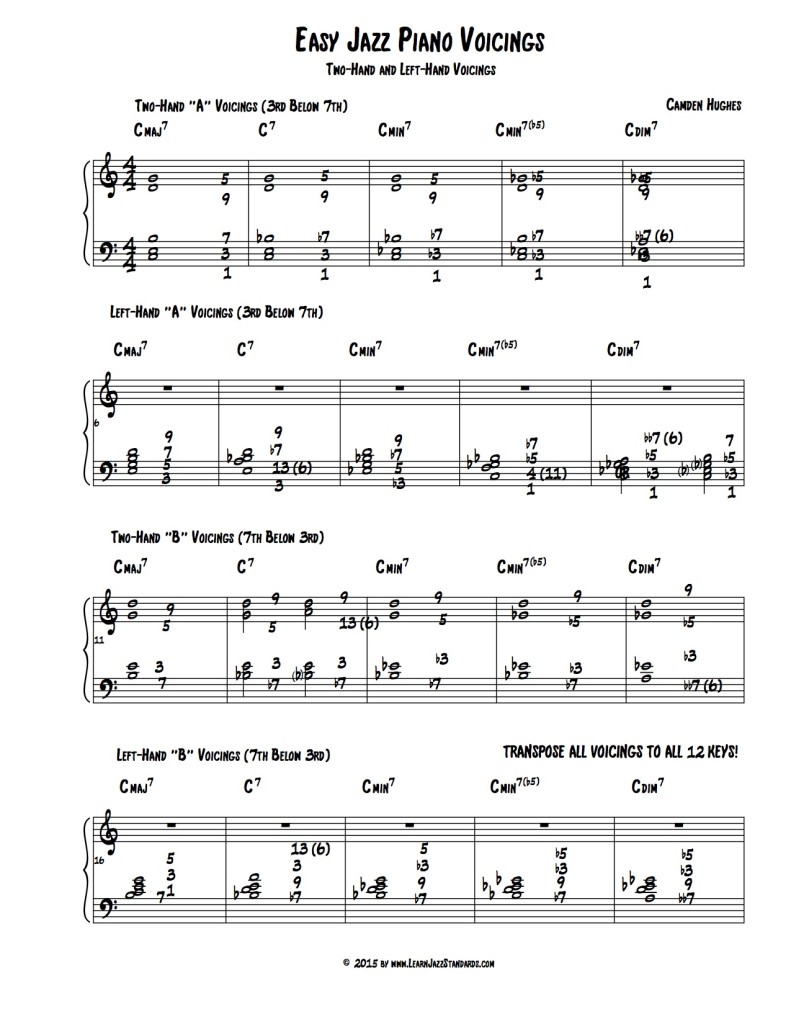
20 Jazz Standards for Beginners. All Blues Easy G Blues in 6/4 (can be felt in 3/4 also) by Miles Davis from his classic album “Kind of Blue.”. Autumn Leaves A classic that transitions between the relative major and minor. Blue Monk is a great blues written by Thelonious Monk. Blue Bossa a jazz bossa nova by Kenny Dorham.Has a chromatic key center change to look out for. Emails: dmitry@varelas.net dmitriy.varelas@gmail.com. Website: www.varelas.net. All rights reserved. Photocopy is forbidden. It is possible only with author's.
Here are some easy jazz tunes for. These tunes are great for beginners because they have a relatively few number of chords, a stable key center, and generally easy melodies. Just because these songs are great for beginners doesn’t mean that they won’t take work to learn! However, as long as a beginning jazz musician has a solid musical foundation, these won’t be as tricky as others.
Learning jazz standards is important for an aspiring jazz musician because jazz standards are the vehicles in we use to improvise and communicate with each other. All of the harmonic, melodic and rhythmic lessons are inside of these tunes. In other words, let the standards teach you how to play!
How to download adobe flash player 11.2 apk files to my device? Flash player 11.2 cnet.
Work through these 20, and you’ll be off to a great start. 20 Jazz Standards for Beginners Easy G Blues in 6/4 (can be felt in 3/4 also) by Miles Davis from his classic album “Kind of Blue.” A classic that transitions between the relative major and minor. Is a great blues written by Thelonious Monk. A jazz bossa nova by Kenny Dorham. Has a chromatic key center change to look out for. Vibraphonist Milt Jackson’s classic Blues in F. The easiest Blues melody of them all by Duke Ellington.
Great first jazz tune! A straight-eighth note jam by Eddie Harris. The F blues scale generally works over the whole thing, but understanding the subtleties of the Db6/9 and Eb6/9 chords will help you to start improvising with a more nuanced approach that uses more than just the blues scale. Simple, bluesy Bb tune over a 16 bar form by Sonny Rollins.
There are more chords in this tune than some of the others on this list, but the melody is easy to play or sing, and the tune doesn’t really have any harmonic surprises, making it an easy tune to improvise over using a C major/A natural minor scale. This classic tune was recorded by Sonny Rollins on his “Saxophone Colossus” album. An easy rhythm changes tune for Lester Young, with a simple melody. Named for his bassist Paul Chambers, this is an easy minor blues in C minor by John Coltrane. One of Charlie Parker’s easiest melodies, this tune has more chords than most on this list, but does not stray far from the Eb Major key center, making it an easy tune to blow over. This tune doesn’t have very many chords, and yet harmonically it’s more complex than many of the other tunes on this list.
You can kind of get away with smashing an F blues over the whole thingbut while that can work it’s better to improvise melodies using different scales on different chords. It’s a good first tune for navigating “changes.” Nice easy latin tune in the key of C by Sonny Rollins. Classic standard by Gershwin, this tune moves back and forth between the relative major and minor key centers. A not too difficult, swinging piece; a lot of fun to play on.
Straight 8th note 16 bar blues by Herbie Hancock. A bluesy 16 bar tune by Nat Adderley in F minor. A must-know tune, slightly more difficult than others on this list, but fun to play.